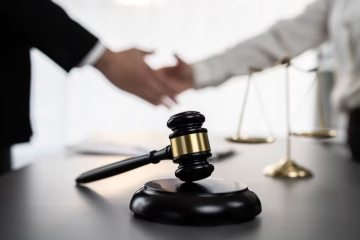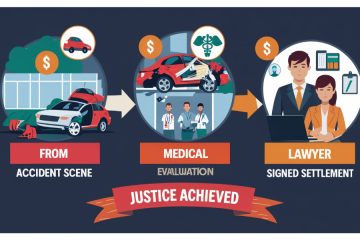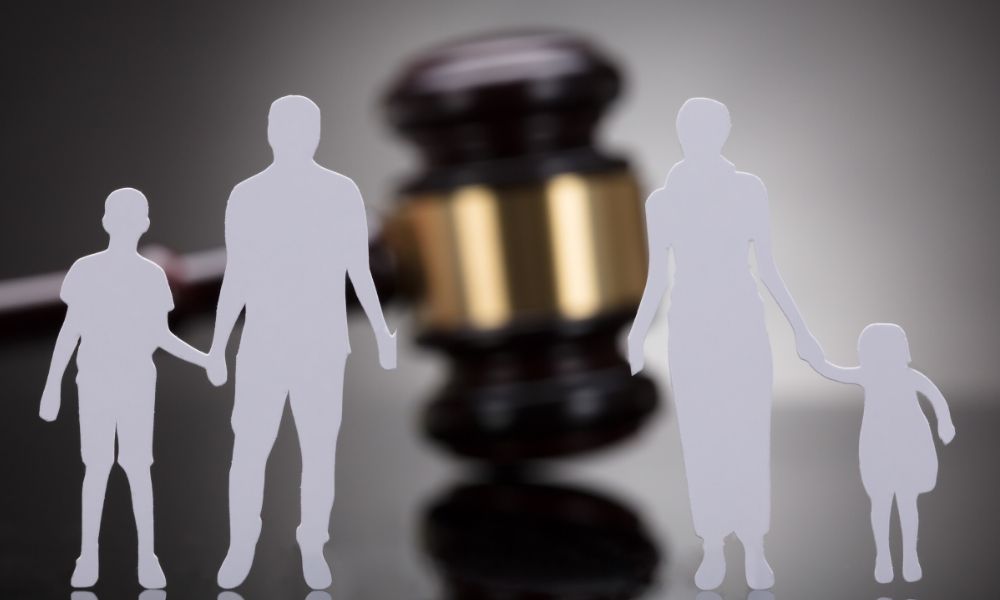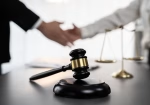Initiating Legal Action/ Understanding the Basics of Filing a Legal Claim
Identifying the Legal Basis
Before initiating legal action, it is crucial to identify the legal basis of your claim. This involves pinpointing the specific laws, statutes, or legal precedents that support your case. The legal basis will guide the entire litigation process and is essential for drafting a coherent and persuasive complaint.
To identify the legal basis, consider the following steps:
- Review the facts of your case and relate them to potential legal theories.
- Consult legal texts, previous case law, and statutes to find relevant legal provisions.
- Seek professional legal advice to ensure that your interpretation of the law aligns with current legal standards and practices.
Understanding the legal foundation of your claim not only strengthens your position but also helps in anticipating and countering potential defenses raised by the opposing party. It is the bedrock upon which your case is built and should be determined with thorough research and expert consultation.
Assessing the Strength of Your Case
Before initiating legal action, it is crucial to evaluate the merits of your case. This assessment involves a thorough analysis of the facts, evidence, and legal principles that apply. An objective evaluation can help determine the likelihood of success and guide decisions about whether to proceed with a lawsuit.
Key factors to consider include:
- The clarity and credibility of the evidence you possess.
- The legal precedents that support your claim.
- The potential defenses that the opposing party may raise.
- The damages or remedies you are seeking and their justifiability.
Consulting with a legal professional can provide valuable insight into the strengths and weaknesses of your case. An attorney can help interpret complex legal doctrines and predict how they might be applied to your specific circumstances. Additionally, they can assist in identifying any procedural hurdles that could impact the progression of your case through the court system.
Understanding Statutes of Limitations
Statutes of limitations are laws that set the maximum time after an event within which legal proceedings may be initiated. When considering filing a legal claim, it is crucial to be aware of these time limits as they vary depending on the type of claim and the jurisdiction in which you plan to file.
- Personal injury claims, for example, often have a statute of limitations ranging from one to six years from the date of the injury.
- Contract disputes may allow for a longer period, sometimes up to 15 years, depending on the state law.
- Property damage claims typically have a time frame similar to personal injury claims.
Failing to file within the appropriate time frame can result in the permanent loss of your right to bring the claim to court. For specific claims, such as those related to asbestos exposure, the statute of limitations can be particularly complex. Asbestos claims require meeting state-specific statute of limitations, proving exposure-related diseases, and active participation in the litigation process with evidence and honesty. It is advisable to consult with a legal professional to ensure compliance with these critical deadlines.
Choosing the Right Venue for Filing
Jurisdiction: State vs. Federal Court
When initiating legal action, one of the first decisions to make is whether to file the claim in state or federal court. This choice is not merely a matter of preference but is governed by specific legal principles. State courts have broad jurisdiction and are typically the default choice for most legal disputes, especially those involving state laws, contracts, or personal injury claims. On the other hand, federal courts have limited jurisdiction, generally hearing cases that involve federal laws, the U.S. Constitution, or disputes between states or between a state and citizens of another state.
To determine the appropriate jurisdiction, plaintiffs should consider the following factors:
- The nature of the legal issue: Federal courts are the proper venue for cases involving federal statutes or constitutional questions.
- The parties involved: Federal jurisdiction is also invoked when the dispute is between citizens of different states, known as diversity jurisdiction, and the amount in controversy exceeds a statutory threshold.
- The location of the parties and the events: State courts are often chosen when the parties reside in the same state and the events giving rise to the lawsuit occurred within that state.
Choosing the correct jurisdiction is crucial as it can affect the laws that apply to the case, the procedural rules, and even the potential jury pool. Plaintiffs should consult with legal counsel to ensure that their case is filed in the appropriate court, as an incorrect choice may result in dismissal and the need to refile the claim, causing delays and additional costs.
Venue Selection: Factors to Consider
When initiating legal action, selecting the appropriate venue is crucial for the success of the case. The choice of venue can affect the convenience of the parties, the applicable law, and even the potential outcome. Here are several key factors to consider when choosing the right venue for filing a legal claim:
- Convenience of the Parties: The location should be accessible to both the plaintiff and the defendant, as well as any witnesses who may need to testify.
- Residence or Location of the Parties: Typically, a case should be filed in the jurisdiction where the defendant resides or where the incident occurred.
- Subject Matter Jurisdiction: Certain courts are designated to handle specific types of cases, such as family law or bankruptcy.
- Legal Strategy: The plaintiff may consider the historical tendencies of a jurisdiction, such as jury verdicts and the speed of the legal process.
It’s important to note that improperly choosing a venue can result in a case being dismissed or transferred, which can lead to delays and additional costs. Therefore, it is often advisable to consult with a legal professional to determine the most strategic venue for your particular case.
The Impact of Venue on Case Strategy
The choice of venue can significantly influence the strategy of a legal case. Attorneys often consider the historical tendencies of a jurisdiction, including the track record of jury verdicts and the general attitudes of the community, which can affect the outcome of a trial.
- Local Laws and Procedures: Different venues may have varying local rules and case law that can impact how a case is presented and argued.
- Judge’s Disposition: The assigned judge’s reputation and legal interpretations can shape the approach to litigation.
- Jury Pool Characteristics: The demographic makeup of potential jurors can inform the selection process and the framing of arguments.
Selecting the right venue is not just a matter of legal formality; it can be a tactical decision that aligns with a client’s best interests. For instance, in cases related to asbestos claims, understanding the nuances of the venue can be crucial for presenting a compelling case and securing just compensation for the loss of a loved one due to mesothelioma.
Preparing the Necessary Documentation
Drafting the Complaint or Petition
The initial step in initiating legal action is drafting the complaint or petition. This document lays the foundation for the case and outlines the plaintiff’s allegations against the defendant. It must clearly state the facts of the case, the legal grounds for the claim, and the specific relief or damages sought.
To ensure the complaint or petition is properly structured, the following elements should be included:
- The names and addresses of all parties involved.
- A statement of jurisdiction explaining why the court has the authority to hear the case.
- A detailed account of the events leading to the claim, providing enough information to support the legal allegations.
- The legal theories and statutes under which the plaintiff is seeking relief.
- The specific remedies or compensation the plaintiff is requesting.
It is crucial for the plaintiff to be precise and factual, avoiding any unnecessary legal jargon or complex language that could obscure the merits of the case. Legal help from an attorney can be invaluable in this process, ensuring that the complaint adheres to the procedural rules of the court and adequately conveys the necessary information.
Gathering Supporting Evidence
Once the complaint or petition has been drafted, the next critical step is to gather supporting evidence. This evidence will form the backbone of the legal claim and must be collected meticulously to ensure the strongest possible case.
- Documentary Evidence: This includes contracts, emails, photographs, medical records, and any other documents that can substantiate the claim.
- Witness Statements: Written or recorded statements from individuals who have direct knowledge of the events in question can be invaluable.
- Expert Testimony: In cases involving specialized knowledge, such as medical malpractice or product liability, expert witnesses can provide critical insights into the causes and effects relevant to the claim.
It is essential to organize evidence in a way that is easily accessible and understandable to the court. This may involve creating a timeline of events, cataloging evidence by type or source, or developing a narrative that ties all the pieces together. For instance, in cases involving asbestos-related diseases, a comprehensive collection of medical records, expert analyses, and information on exposure history is crucial. Websites that provide information on veterans with mesothelioma, VA benefits, and legal aspects can be particularly useful in constructing a case around pleural mesothelioma causes, symptoms, and treatment options.
Filing Fees and Waivers
Initiating a legal action typically involves certain costs, and filing fees are one of the primary expenses. These fees are required to cover the administrative costs of the court and vary depending on the type of case and the court in which the claim is filed. It’s essential for claimants to be aware of the fee schedule and budget accordingly for these expenses.
However, not all claimants are able to afford these fees. In such cases, individuals may apply for a fee waiver. To qualify for a waiver, claimants must typically demonstrate financial hardship. The process usually involves:
- Completing an application or affidavit requesting the waiver.
- Providing documentation that evidences income, assets, and liabilities.
- Sometimes, explaining the nature of the claim and why the waiver is necessary.
If the waiver is granted, the claimant can proceed without paying the filing fees, ensuring that access to the legal system is not impeded by financial barriers. It’s important to note that even with a fee waiver, there may be other costs associated with pursuing a legal claim, such as service of process fees or costs related to gathering evidence.
Navigating the Legal Procedures
Serving the Defendant
Once the initial paperwork is filed, the next critical step in initiating legal action is serving the defendant. This process involves delivering a copy of the complaint and any summons to the person or entity being sued. It is a pivotal moment that officially notifies the defendant of the legal action and their obligation to respond.
The service of process must be carried out in accordance with the law, which typically requires that the documents be delivered by an adult who is not a party to the case. The methods of service can vary, but they often include personal delivery, service by mail, or service by publication when the defendant cannot be located.
- Ensure that the service of process is done legally and correctly to avoid any procedural challenges.
- Keep proof of service, as it will need to be filed with the court to show that the defendant has been properly notified.
- Be aware of the time limits for serving the defendant, as failing to serve within the prescribed period can lead to delays or dismissal of the case.
Responding to Motions and Hearings
Once a legal claim is filed, the court’s procedural landscape becomes a critical arena for both parties. Responding to motions is a key aspect of this phase. A motion is a formal request to the court to make a decision about an aspect of the case. Parties must be vigilant and timely in their responses to avoid default judgments or other negative consequences.
During the pre-trial phase, hearings may be scheduled to address these motions or other legal matters. It is essential for parties to:
- Prepare comprehensive responses to motions filed by the opposing party.
- Attend all scheduled hearings, presenting arguments and evidence effectively.
- Adhere to the court’s rules of procedure and deadlines.
Failure to respond appropriately to motions and hearings can compromise the legal strategy and potentially result in the loss of certain rights or claims. Legal counsel plays a crucial role in navigating these procedures and advocating on behalf of the client’s interests.
Discovery Process and Pre-trial Conferences
The discovery process is a critical phase in litigation where both parties exchange relevant information and evidence. It’s designed to eliminate surprises and clarify what the lawsuit will involve. Key components of discovery include:
- Interrogatories: Written questions that must be answered under oath.
- Depositions: Oral questioning of parties and witnesses under oath.
- Requests for production: Demands for documents, electronic information, and other tangible items.
- Requests for admissions: A list of statements that the opposing party must admit or deny.
During this stage, attorneys may also file motions to compel discovery or to protect their clients from overly burdensome requests. Pre-trial conferences, on the other hand, are meetings between the judge and the lawyers to discuss the progress of the case, the possibility of settlement, and to set a trial schedule. These conferences ensure that both sides are prepared for trial and help streamline the issues to be addressed in court.
Understanding Potential Outcomes
Settlement Negotiations and Mediation
Before a legal claim proceeds to trial, parties often explore the possibility of a settlement. Settlement negotiations are discussions between the parties involved, aimed at resolving the dispute without the need for a trial. These negotiations can be informal or structured, with the assistance of attorneys who help clarify the demands and expectations of their clients.
Mediation is a more formal method of alternative dispute resolution, where a neutral third party, the mediator, facilitates communication between the disputing parties. The mediator’s role is not to make a decision but to help the parties find common ground and reach a mutually acceptable agreement. The process of mediation typically involves:
- An initial joint meeting where the mediator explains the rules and goals of the process.
- Separate sessions (caucuses) where the mediator meets with each party privately to discuss the issues and explore settlement options.
- Joint negotiation sessions where the parties come together to negotiate directly.
The benefits of settling a case through negotiations or mediation include saving time, reducing legal costs, and giving the parties control over the outcome. However, if a settlement cannot be reached, the case will continue towards trial.
Trial and Judgment
Once a case proceeds to trial, both parties present their arguments, evidence, and witness testimonies before a judge or jury. The trial is the culmination of the legal process where the facts are thoroughly examined, and the legal merits of the case are argued.
- Opening Statements: The trial begins with each side presenting an opening statement, outlining their case to the judge or jury.
- Presentation of Evidence: The plaintiff and defendant take turns presenting evidence, which may include documents, physical evidence, and witness testimony.
- Closing Arguments: After evidence is presented, closing arguments are made, summarizing the key points and attempting to persuade the judge or jury.
- Jury Deliberation: In a jury trial, the jury then deliberates to reach a verdict. In a bench trial, the judge will decide the outcome.
- Judgment: The final judgment is issued based on the verdict, which may include monetary damages, injunctions, or declaratory relief.
The judgment is legally binding, and the losing party may be required to pay damages or comply with other court orders. In some cases, the judgment may also include court costs and attorney’s fees. It’s important for parties to understand that the trial’s outcome is uncertain and can be influenced by many factors, including the effectiveness of the legal representation and the persuasiveness of the evidence presented.
Appeals and Post-Judgment Relief
After a judgment has been rendered, parties may consider whether to accept the outcome or pursue an appeal. An appeal is a request to a higher court to review and change the decision of a lower court. The appellate process involves several steps, including filing a notice of appeal, preparing an appellate brief, and potentially presenting oral arguments.
If an appeal is not the chosen path, or if it is unsuccessful, parties may seek post-judgment relief. This can include motions for a new trial, motions to amend or alter the judgment, and in some cases, motions for relief from judgment due to specific reasons such as newly discovered evidence or procedural errors.
- Filing a Notice of Appeal: Must be done within a strict timeframe after the judgment.
- Appellate Brief: A document that presents the appellant’s arguments, including errors that allegedly occurred during the trial.
- Oral Arguments: An opportunity to further persuade the appellate judges.
- Post-Judgment Motions: These must be filed within a certain period after the judgment and are subject to specific procedural rules.
Understanding the nuances of appeals and post-judgment relief is crucial for litigants. It is often advisable to consult with legal counsel to navigate these complex procedures and to determine the best course of action based on the circumstances of the case.
















